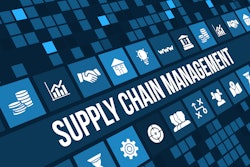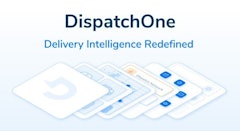
Procurement teams today face increasing demands: accelerated sourcing cycles, complex intake processes, and mounting pressure to drive cost efficiency and strategic value. Agentic AI is helping meet these demands by automating repetitive tasks and enabling procurement professionals to focus on strategic initiatives.
But what’s becoming clear is that the greatest impact of AI in procurement isn’t about efficiency alone. It’s about redefining the role of the procurement professional altogether. We’re witnessing a fundamental shift in how procurement operates. With agentic AI, procurement is evolving beyond transactional execution into a more strategic, insight-driven function. These systems do more than automate; they collaborate with teams to solve challenges faster, surface new opportunities, and expand procurement’s reach within the business. In doing so, they open the door to new business models, broader supplier engagement, and more resilient supply chains.
Empowering people through intelligent agents
These intelligent agents can parse natural language intake requests, identify qualified suppliers, and even launch sourcing events. This means that the repetitive, time-consuming tasks that once dominated a buyer’s schedule are now streamlined. Procurement professionals gain the bandwidth to focus on what they do best: negotiating, strategizing, and building the relationships that unlock long-term value.
Consider the difference this makes in practice: instead of manually sifting through supplier data, a buyer can instantly receive a shortlist of vetted vendors, complete with performance history and diversity certifications. That buyer can then dedicate their time to crafting negotiation strategies, strengthening supplier relationships, or uncovering cost-saving opportunities that AI alone might not detect.
This is not speculative technology. Organizations are already deploying agentic AI to rethink outdated processes. The introduction of these systems is sparking new conversations about role evolution, collaboration models, and decision-making structures. The result is more agile, proactive, and connected procurement teams.
Practical steps to get started with agentic AI
If you’re ready to explore agentic AI in procurement, here are some actionable steps to start:
● Identify repetitive, high-volume tasks that could benefit most from automation, such as supplier identification or RFQ distribution.
● Engage stakeholders early to align on goals, priorities, and expected outcomes, ensuring there’s shared understanding across departments.
● Start with a pilot program focused on one use case to demonstrate quick wins and build confidence.
● Measure results and gather feedback from users to refine and improve, tracking metrics such as cycle time reduction, cost savings, and supplier engagement.
● Invest in training and change management so teams feel confident using and managing AI agents, and understand how their roles will evolve.
● Ensure governance and transparency with clear policies, controls, and auditability to address compliance and risk management from the outset.
Approaching agentic AI as an iterative journey rather than a one-time implementation will help procurement teams capture value quickly while laying the groundwork for broader adoption.
Creating more human-centered procurement
Far from removing the human element, agentic AI is elevating it. By reducing administrative burden, AI agents enable professionals to channel their time and creativity into the areas that need it most. Supplier diversity programs, sustainability initiatives, and innovation partnerships require the kind of strategic thinking that only people can provide. With AI managing the mechanics, procurement leaders are free to lead.
Culturally, we’re seeing a shift as well. Top-performing teams are building experimentation into their DNA. They’re piloting new workflows, gathering real-time feedback, and continuously iterating. They’re not simply adopting technology; they’re rethinking how procurement can and should work in a fast-changing enterprise environment.
Building trust, not just technology
Skepticism is natural, especially with any emerging technology. But the most successful implementations start not with hype, but with transparency. To build trust effectively, procurement leaders should:
● Communicate openly about the purpose, scope, and expected impact of AI initiatives.
● Involve teams early in the design and decision-making process to foster a sense of ownership.
● Establish clear governance with role-based controls, auditability, and escalation paths to ensure accountability.
● Offer hands-on training so employees feel confident and empowered when using new tools.
● Celebrate small wins to demonstrate progress and reinforce the value of adoption.
When procurement professionals feel informed, involved, and supported, they are far more likely to embrace change and experiment with new approaches.
The conversation around AI in procurement should not be one of replacement, but of enablement. It’s not about choosing between human or machine, it’s about designing systems where each strengthens the other. The value of procurement has always been driven by its people. With the right technology in place, that value only increases.
With that being said, those who know how to use AI to their advantage will displace those who don’t. Looking ahead, procurement leaders who embrace this transformation will not just keep pace, they’ll set the standard for a more agile, intelligent, and value-driven future. The organizations that act now will shape best practices, influence technology development, and position procurement as a true driver of competitive advantage.



















